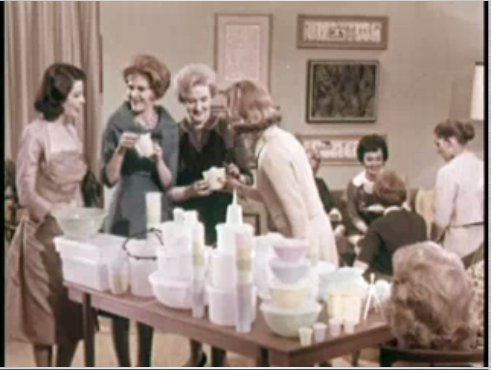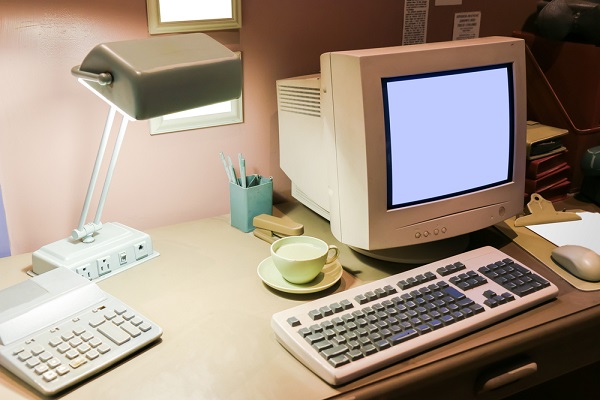As a site that champions flexible and remote work, everyone at FlexJobs knows quite abit about the history of flexible working. But we wanted to digdeeper to see what we could find, in particular, about the historyof working from home. And we really do meanthe complete history… we got swept up inresearch and wound up as far back as the hunter-gatherers. But ifyou're at all interested in remote work and how it came to be,which we clearly are, it's all pretty interesting.
|In fact, as you'll read in this piece, the history of workingfrom home isn't nearly as recent as many think. It actually has amuch longer past than our history of working in offices. The growthof remote work in the last 10 years is ultimately a return to anearly and long-used way of working.
|We hope you enjoy this comprehensivehistory of working from home!
|This article is adapted from anarticle that orginally appeared on FlexJobs.com.
|||
Hunter-gatherers: the earliest at-homeworkers
From a long-view perspective, working from home has always beena thing, not just in the last several decades with the advent oftelecommuting, but for hundreds of thousands of years. Combiningwork space and living space is a natural way for families andcommunities to efficiently pool resources, make the most of thespace at hand, and work cooperatively together for the good ofall.
|The work-home environment was a definite feature of life forhunter-gatherers, who foraged for sustenance and brought the fruitsof their labor back to the hearth. People prepared animals forconsumption, sorted and ground grains, and fashioned clothing forcoverage and protection.
||
Medieval work-homes: the first open-planoffices?
Fast-forward to the work-home of medieval times, when the workingclasses often set up craft and trade-focused shops in their homes.They offered goods and services to support their families in livingspaces that were architecturally designed to accommodate workingfrom home.
|For example, during Medieval times, most working-class Englishpeople lived in work-homes. The single-story, one-room houses were“a combination of kitchen and spinning/weaving/dressmakingworkshop, bedroom and dairy, dining room, butchery, tannery, andbyre.”
|Domesticity was a focal point of early work-from-homeactivities. Managing the home meant multitasking and managingresources, finances, and the division of labor. Boundaries betweenhome and work life, if they existed at all, were blurred atbest.
|Early at-home work in the middleages covered professions like bakers, seamstresses,shoemakers, potters, weavers, ale brewers, and blacksmiths.Notably, the gender gap was not a significant factor, given thathome-based workers could as easily be male as female.
|The all-hands-on-deck spirit of working from home placed valueon many of the skills at which women excelled, like sewing,calligraphy, or other of the so-called “womanly arts,” an umbrellaterm that includes domestic science and home economics.
||
The Renaissance's focus on administration leads to“offices”
As time went on, merchants and craftspeople before theIndustrial Revolution created what might be described as the firsthome offices. These hybrid work-homes had street-facing shops orworkshops, and private areas set aside for day-to-day living.
|But a growing interest in keeping historical archives,administering state business, and creating a centralized locationfor these activities led to some of the first administrativebuildings. “One of the most notable examples is the UffiziGallery, built by the Medici family in Florence in 1581. Thisprocess required the administration, archives, and a state court tocome together in the same building.”
|This space officially became an art museum in the 1700s and isstill one of the best-known museums in the world.
|The mental shift during this time towards free thinking andeducation also created a growing need for centralized learning inthe form of schools. And the Industrial Revolution was just aroundthe corner, bringing even more centralized administrative oversightto the working world.
| 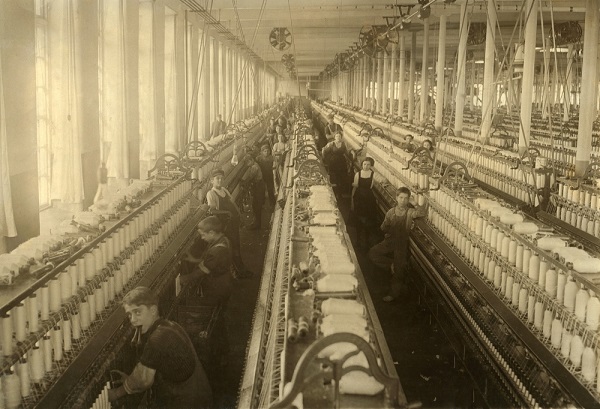
|
The Industrial Revolution pulls workers out of thehouse
The Industrial Revolution broughtprofound changes for men and women alike. Factory work,particularly in the textile industry for women, meant leaving homeand toiling in outside work environments.
|The industrial age birthed a new movement of skilled workers andset up a working-outside-the-home model that many employers stillfollow today, even though it's become increasingly outdated.
|That model (the precursor of the 9-to-5, in-office workschedule) meant working an inflexible schedule from anemployer-provided environment, with employer-provided tools orequipment. The means of production were transferred from thework-home to the work-site.
|Despite the advent of work opportunities outside the home, somepeople continued to work for pay from their homes into the 19th and early 20thcenturies. For women, that work may have included doing laundryfor outside customers, providing food and baked goods to sell tofactory workers, or doing “finish work” for shoe and garmentmanufacturers.
|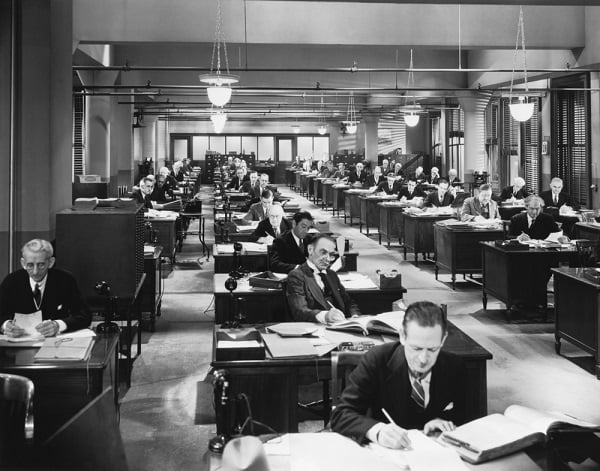
Dawn of the 20th century: the modern office takesshape
Office work brought further changes. The history of the office showsthat the first commercial workspaces were hugely transformative,thanks largely to some new-fangled inventions: the telephone, thetelegraph, widespread public electricity, and the typewriter. Thesewere some of the precursors to the remote office communicationtools we use today.
|The development of public transportation options that enabledworkers to travel to and from home relatively inexpensively had ahuge impact as well. Commuting was well underway.
|Women, in particular, moved into a new realm of professionalismthat took them beyond craft-based or domestic work. The job ofsecretary, still a leading position among so-called “pink-collar workers,” requiredtrading off home for the office.
|For both women and men, work became increasingly associated withleaving home for an office or a manufacturing facility. 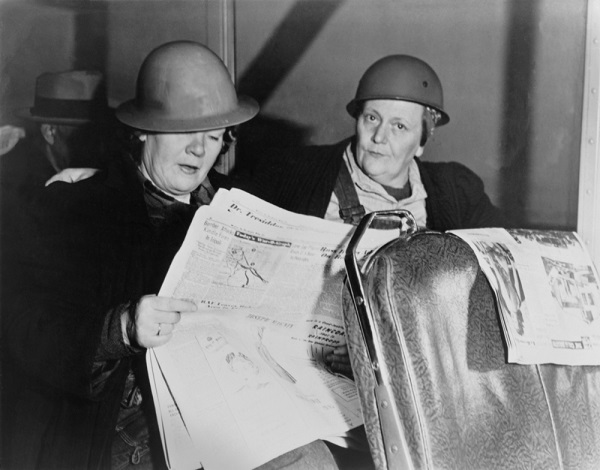
World War II changes the definition of women'swork
To this day, working from home is often thought of aswomen-dominated even though about the same number of men and womenengage in remote work, according to the “2017 State of Telecommuting”report.
|That might be because early at-home jobs for women were oftenbased on their domestic duties. The idea of a woman earning wagesto support her family seemed somehow more sensible if the workinvolved cooking, sewing, or caregiving services likebabysitting.
|Then came World War II, Rosie the Riveter, and the need forwomen to work in factories and shipyards to take the places of menwho'd gone off to war. Women left home to enter the workforce bythe millions.
|Between 1941 and 1945, the number of women in the workplace rosefrom 11 million to nearly 20 million, according to a study of women, gender, and WorldWar II. Even though many of these newly minted women workersreturned home to traditional roles after the war, they'd succeededin changing the U.S. workplace forever.
||
Wartime technology lays the foundation for modernremote work
Wartime innovations brought the advent of whatPricewaterhouseCoopers called the biggest disruptor of all:technology.
|In 1942, the world's first electronic digital computer was builtat Iowa State University, which not only helped crack enemy codes, but also laidthe groundwork for the work-from-home movement that was still yearsoff.
|As noted in the PwC report, technology is fueling “major trendslike demographic change, resource scarcity, climate change,urbanization, and a global shift in economic power.”
||
1950s: Housewives find work-from-home jobs inmulti-level marketing
After World War II ended, women who'd taken jobs while men wentinto battle found themselves suddenly thrust out of aworkforce that they'd excelled in. They had the skills,the experience, and the desire to work outside the home, and yetthose opportunities suddenly no longer existed for them.
|Back to the home they went—and with their return to homemakingcame the rise of new types of work-from-home opportunities, bothlegitimate and less so.
|One type of work-from-home job we've seen once again rise inpopularity traces its roots back to the post-World War II era:multi-level marketing.
|In Vox's article, “Why Your Facebook Feed Is Filled withWomen Selling Essential Oils and Press-on Nails,” writer KateShellnutt explains the birth of so-called multi-level marketing“schemes,” also known as MLM, referral marketing, pyramid selling,and network marketing.
|The first opportunity for post-war housewives to have their own“business” at home came from Tupperware.
|“Brownie Wise invited fellow '50s housewives to demonstrate EarlTupper's line of plastic containers at one of her 'patio parties.'Just a few years later, in 1954, Kiplinger's Personal Finance wrotethat 20 million American women a year attended 'sales parties inthe home.'”
|Unfortunately, these popular business ventures are stillunprofitable for most people involved with them. At one MLMcompany, “92 percent of the 130,000 consultants make $500 a year onaverage.”
|
1960s: Creative workers keepthe work-home fires burning while most report to theoffice
||
By the 1960s, the 20th-century workforce was a commutingworkforce. And labor was still quite physical. Manufacturing andtextiles were still booming industries and the “knowledge economy”that dominates today didn't yet exist.
|But members of the creative professions (artists, writers, etc.)continued to work from home most of the time.
|“What we've come to think of as modernstay-at-home workers really grew out of the late twentiethcentury with creatives in metro areas like New York, London, andParis reverting back to the Medieval way of doing things—withstudio apartments that doubled as work space and living areas,”writes the History Cooperative.
|This can be seen as both a return to pre-industrial revolutionwork routines and an advancement towards the future of work.
|But companies still largely controlled the means of production,as manufacturing, office equipment, and other work staples were notyet inexpensive or portable enough to be utilized by individualsworking from home.
|However, a technological revolution was just around the cornerthat would tip the means of production towards the workers, andencourage companies to start adopting “telecommuting” in ways wewould recognize today. 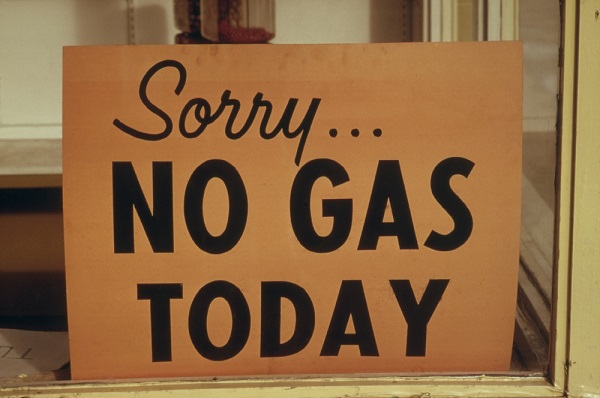
1970s: Oil embargo and clean air push telecommuting tothe forefront
According to the Atlantic's “What Telecommuting Looked Like in1973,” the start of the 1970s saw several key trends thatpushed telecommuting to the forefront:
The Clean Air Act was passed in 1970.
The OPEC oil embargo began in 1973.
The idea of “gridlock” was coined to describe what then seemedlike terrible commuter traffic into and out of cities everyday.
Jack Nilles is largely regarded as the father of moderntelecommuting. He was the lead author of the “founding document” ofthe telecommuting movement, a book called TheTelecommunications Transportation Tradeoff.
|Published in 1973, the book recommended “either the jobs of theemployees must be redesigned so that they can still beself-contained at each individual location, or a sufficientlysophisticated telecommunications and information-storage systemmust be developed to allow the information transfer to occur aseffectively as if the employees were centrally collocated.”
|Today, telecommunications and information storage systems havedeveloped to a point where information transfer among remoteworkers occurs “as effectively” as between collocated workers.
|In 1979,with the OPEC oil embargo in its sixth year, the Washington Post published the article, “Working at Home Can SaveGasoline” which suggests telecommuting could have eased the gascrisis.
|“If 10% of those who commute to work each weekday were to startworking at home two days each week, this would reduce the volume ofsuch travel by 4%. This is not a large number in the absolute, butsignificant when compared to the 3 to 5% overall shortfall inpetroleum availability which brought on the recent gasolinelines.”
|The article even points out that the rising service industry,declining manufacturing sector, and the growth of information-basedjobs make it much easier for people to return to decentralized,home-based methods of work that were largely popular before theIndustrial Revolution.
||
|
1980s: Companies test the telecommutingwaters
With the trends of the 1970s still very much in effect as 1980rolled around—high gas prices, gas shortages, the rise of theinformation economy and service jobs, environmental concerns, and“gridlock” commutes—companies began to experiment with andformalize telecommuting programs for employees.
|Throughout this decade, companies like JCPenney, American Express, The Hartford, General Electric –GE, Levi Strauss & Co.,and Sears Holdings implementedor grew telecommuting programs for employees, many of which arestill in place today.
|In June of 1987, the Christian ScienceMonitor wrote, “Telecommuting: Reality Sets In,” where it saysabout 1.5 million Americans were telecommuters and about 300companies ran telecommuting programs.
|Regarding gender and remote work, the article was clearlywritten when women were still the primary—or sole—caregivers foryoung children.
|“'A woman cannot simultaneously care for her child and do herwork,'” said Kathleen Christensen, director of the National Projecton Home-based Work. “She conducted a national survey of 14,000women, including those with preschool children. It found that twoout of three of these mothers who work at home (or would like to)had to use supplemental day-care.”
|Perhaps this is the origin of all those terrible work-from-homestock photos we see of moms wrangling children while simultaneouslyworking.
|Remote work picked up steam in the 1980s, but there were stillsome kinks to work out—some of which we're still debatingtoday.
||
1990s: Federal agencies, Congress, and the presidentback telecommuting
Telecommuting in the 1990s began with a large telecommutingexperiment by the U.S. Office of Personnel Management and theGeneral Services Administration.
|Called the Federal Flexible Workplace PilotProject, the purpose was to “assess the benefits and challengesof allowing employees to work at locations other than theirgovernment office base.” Rather than call it home-based work orremote work, these non-office work locations were called“flexiplaces.”
|About 550 employees participated and the results showed benefitssuch as:
Improved productivity
Eliminated the need for office space
Reduced costs
Afterward, Congress voted for legislation that appropriatedfunding for “flexiplace” work-related equipment and utilities infederal employees' private homes annually until 1995, when it wasmade permanent.
|In 1994 and 1996, President Clinton issued a PresidentialMemorandum directing executive branch agencies to create more“flexible family-friendly work arrangements,” includingtelecommuting.
|In 1997, the Government Accountability Office (GAO) issued areport showing the benefits to include:
Reduced commuting time
Lowered personal costs for transportation, parking, food, andwardrobe
Improvement in the quality of work life and morale
A better balance between work and family demands
Telecommuting was also being covered by academic and businessjournals. Telecommuting studies were published bythe Journal of Communication and SAMAdvanced Management Journal, and articles were written inthe Wall Street Journal, Working Woman, USA Today,Computerworld, and other large publications. 
2000s: “Working at home is on the rise”
That's the statement declared by the U.S. Census afteran analysis of remote work in the years2000 through 2010. Here are some of the best stats from theCensus' analysis:
Remote work on the rise: Between 2000 and2010, people who worked at least one day at home per week increasedby over 4 million—35%. The population of occasional remote workerswent from 9.2 million to 13.4 million during this decade.
More employees working remotely than self-employedworkers: Between 1980 and 2000, employees grew tobecome the majority of remote workers (over self-employed workers).In 1980, 39.4% of remote workers were private company employees(not self-employed). By 2010, they grew to over 59%.
Remote workers are better educated: By2010, home-based workers were more likely to have a bachelor'sdegree (50.5%) than on-site workers (29.7%).
Occasional remote workers made moremoney: Workers who work both at home and on-siteearned $52,800 per year on average. On-site workers: $30,000 peryear. Remote workers: $25,500 per year.
In 2001, the federal government expanded federal teleworkby passing legislation toestablish work policies allowing eligible federal employees totelecommute “to the maximum extent possible without diminishedemployee performance.”
|Throughout the 2000s, more companies started offeringremote-friendly jobs and advertising telecommuting options in theirjob listings. This meant professionals could potentially gear theirjob searches towards telecommuting jobs—but scam jobs were also becoming a hugeproblem in the work-from-home job market. It's estimatedthat for every one legitimate telecommuting job, there are 60-70scams.
||
|
2010s: Remote work transitions from perk to businessstrategy
In 2010, President Barack Obama signed the Telework Enhancement Actof 2010, which doesn't just encourage,but requires all federal executive agencies toestablish policies for eligible employees to work remotely.
|For fiscal years 2014-2015, theOffice of Personnel Management said telework participationincreased from 39% to 46% of eligible employees and from 17% to 20%of all employees.
|All participating agencies were asked to report on the outcomesthey experienced from telework. The most common outcomesincluded:
Better emergency preparedness (59%)
Improved employee attitudes (58%)
Better recruitment (35%)
Better retention (35%)
Reduced employee commute miles (29%)
Improved employee performance (17%)
Reduced real estate costs (17%)
Reduced energy use (13%)
And remote work isn't just expanding and succeeding in thefederal government.
|In 2017, FlexJobs and Global Workplace Analytics partnered to report onthe state of telecommuting in theU.S. We found that between 2005 and 2015 telecommutinghalf-time or more increased 115%. Furthermore, 56% of jobs in theU.S. are now compatible with at least occasional remote work. Andthe number of people working from home“occasionally” increased from 37% in 2015 to 43% in 2016.All signs point to the continued rise of remote work.
|Even still, remote work has a ways to go.
|Complete your profile to continue reading and get FREE access to BenefitsPRO, part of your ALM digital membership.
Your access to unlimited BenefitsPRO content isn’t changing.
Once you are an ALM digital member, you’ll receive:
- Critical BenefitsPRO information including cutting edge post-reform success strategies, access to educational webcasts and videos, resources from industry leaders, and informative Newsletters.
- Exclusive discounts on ALM, BenefitsPRO magazine and BenefitsPRO.com events
- Access to other award-winning ALM websites including ThinkAdvisor.com and Law.com
Already have an account? Sign In
© 2024 ALM Global, LLC, All Rights Reserved. Request academic re-use from www.copyright.com. All other uses, submit a request to [email protected]. For more information visit Asset & Logo Licensing.






